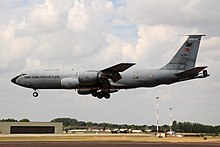This is an old revision of this page, as edited by Dottasriel2000 (talk | contribs) at 13:35, 13 June 2021. The present address (URL) is a permanent link to this revision, which may differ significantly from the current revision.
Revision as of 13:35, 13 June 2021 by Dottasriel2000 (talk | contribs)(diff) ← Previous revision | Latest revision (diff) | Newer revision → (diff) This article is about Asena in Turkic mythology. For other uses, see Asena (disambiguation).

Asena is the name of a she-wolf associated with the Oghuz Turkic foundation myth. The ancestress of the Göktürks is also a she-wolf, mentioned yet unnamed in two different "Wolf Tales" recorded by Chinese chroniclers. The legend of Asena tells of a young boy who survived a battle; a female wolf finds the injured child and nurses him back to health. The she-wolf, impregnated by the boy, escapes her enemies by crossing the Western Sea to a cave near the Qocho mountains and a city of the Tocharians, giving birth to ten half-wolf, half-human boys. Of these, Yizhi Nishidu becomes their leader and establishes the Ashina clan, which ruled over the Göktürk and other Turkic nomadic empires.
Modern era
With the rise of Turkish ethnic nationalism in the 1930s, the veneration of figures of Turkic Mythology, such as Bozkurt, Asena and Ergenekon was resurgent. The symbol of Asena is embossed on the stage of the personal theater of the first President of Turkey, Mustafa Kemal Atatürk, at his residence in Ankara. He also referenced the motif in his speeches, such as that of 13 February 1931 in Malatya titled Türk Ocağı.
Also Turkish Air Force's Boeing KC-135 Stratotanker filo uses nickname as ''Asenas''
See also
- Grey wolf (mythology)
- She-wolf (Roman mythology), a similar figure in the mythical foundation of Rome
- Romulus and Remus
References
- André Wink. Al-Hind: The Making of the Indo-Islamic World. Brill Academic Publishers, 2002. ISBN 0-391-04173-8. Page 65.
- Ziya Gökalp, transcription: Şahin Filiz, "Türk devletinin tekâmülü 12: Hakanlık Teşkilatı",Küçük Mecmua -II-, Bu da Çinlilere göre (Asena=Kurt) manasındadır (in Turkish)
- Golden, Peter B. (August 2018). "The Ethnogonic Tales of the Türks" in The Medieval History Journal, 21(2). 21 (2): 291–327
- Hongen, Niu; 牛鴻恩 (2015). Xin yi Yi Zhou shu. 袁宏. (Di 1 ban ed.). Taibei Shi: 三民書局. ISBN 9789571460192. OCLC 913445355.
- Findley, Carter Vaughin. The Turks in World History. Oxford University Press, 2005. ISBN 0-19-517726-6. Page 38.
- Roxburgh, D. J. (ed.) Turks, A Journey of a Thousand Years. Royal Academy of Arts, London, 2005. Page 20.
- ^ Murat Arman, "The Sources of Banality In Transforming Turkish Nationalism", CEU Political Science Journal, issue: 2 (2007), p. 136.
- Atatürk'ün Söylev ve Demeçleri II, Atatürk Kültür, Dil ve Tarih Yüksek Kurumu Atatürk Araştırma Merkezi, 1989, p. 301, Turkish text: Demiryollarını kullanacak olan Türk milleti menşeindeki ilk sanatkarlığına, demirciliğinin eserini tekrar göstermiş olmakla müftehir olacaktır. (in Turkish)
- Mehmet Önder, Atatürk'ün Yurt Gezileri, Türkiye İş Bankası, 1975, p. 268.